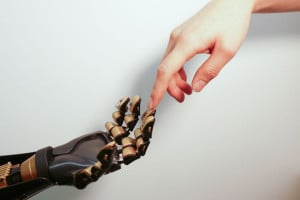
After a decade of work to create artificial skin, Stanford chemical engineering professor Zhenan Bao has reached the first step of a ground-breaking product.
Bao’s goal in making “plastic skin” was to create something that could detect subtle differences in materials as well as distinguish different levels of pressure. Now, Bao’s research team has successfully achieved the second of these two goals. Stanford News reported that people who eventually use the skin, designed to cover prosthetic limbs, will be able to distinguish between “a limp handshake and a firm grip.”
The prosthetic skin’s mechanisms allow sensations to be translated from electrical signals in the skin to biochemical stimuli. This never-before-reached product can be attributed to experimental procedures from several professors in the bioengineering department.
Optogenetics, a field headed by Stanford bioengineering professor Karl Deisseroth, is the bioengineering of cells that are sensitive to specific light frequencies. By applying Deisseroth’s research to the prosthetic skin, various levels of sensory pressure can be translated into light frequencies, allowing these bioengineered cells to “feel” the pressure from secondary sources.
However, optogenetics is merely one angle that Bao’s team is using to generate the prosthetic skin’s sensation. Associate professor of chemistry Bianxiao Cui has been working with the team to directly stimulate neurons with electrical pulses. All of this innovation is creating progress for the efforts of Bao’s team.
This breakthrough is only the beginning for artificial skin. The future of the product likely includes different types of sensors, such as those that can distinguish different materials, temperatures and all the other senses the hand can interpret. While it will take time, the realization of the team’s vision will lead to a product even more groundbreaking than the current prototype.
Contact Anna Cole at annacole ‘at’ stanford.edu.